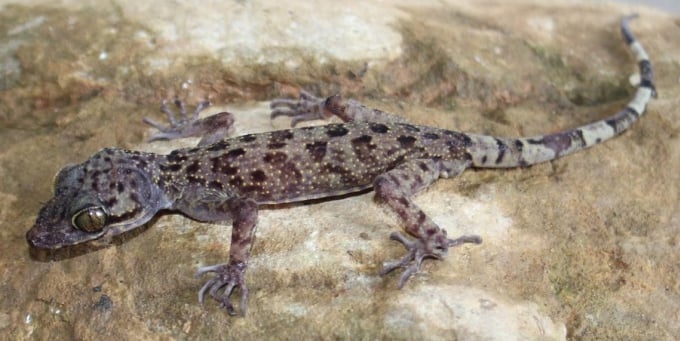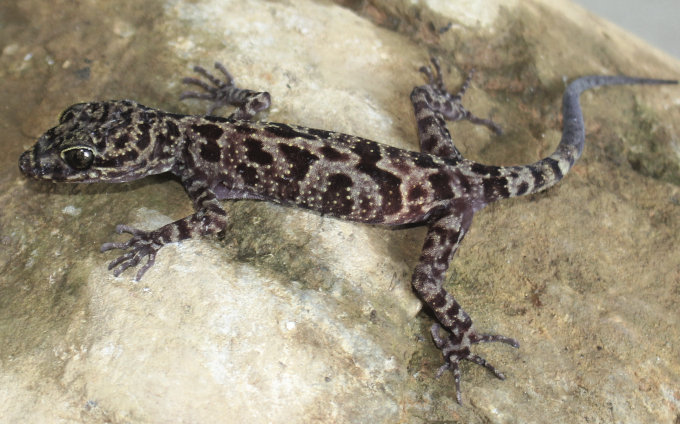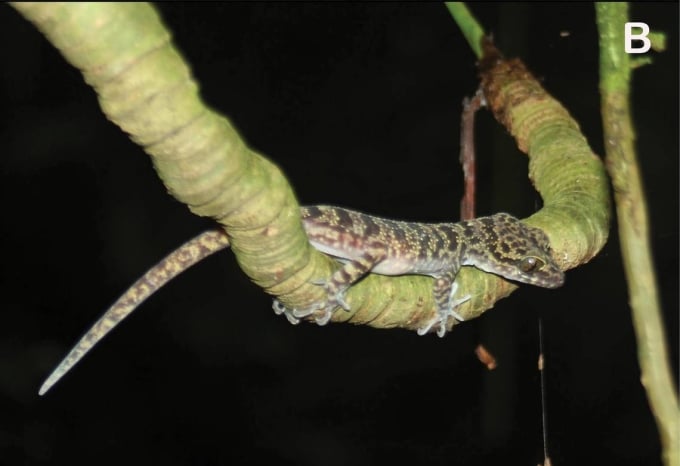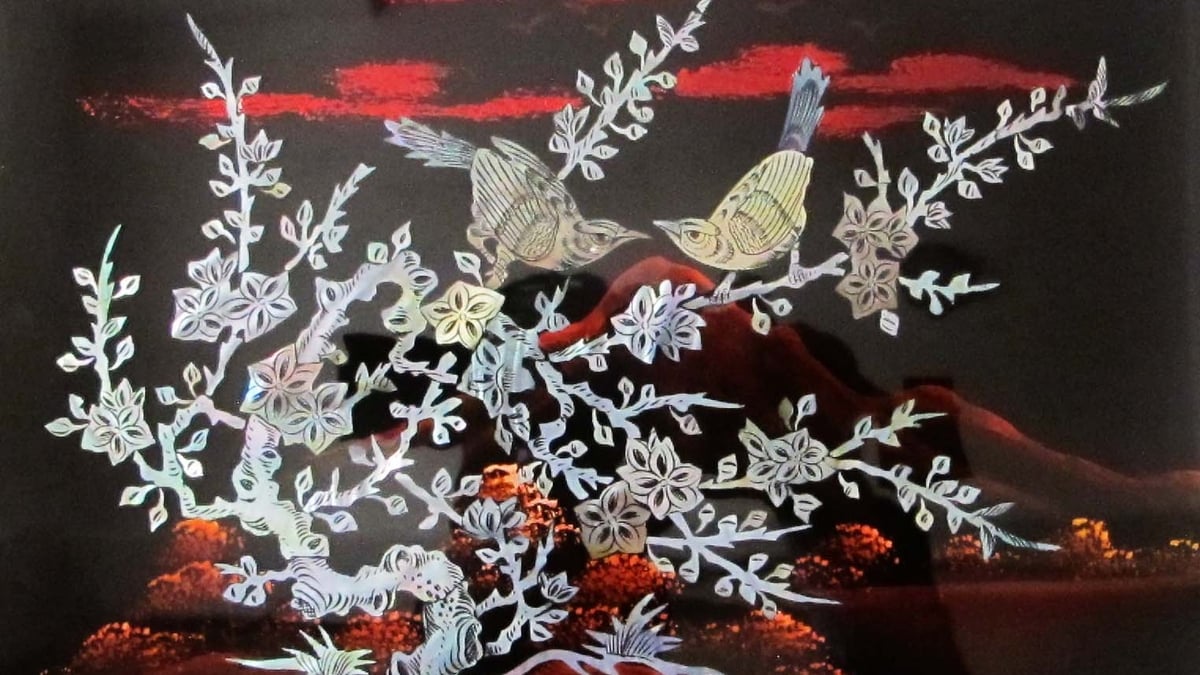The new toed lizard has yellow tubercles scattered on its back and limbs, and the digits on each limb are curved in the middle.
A research team from the Institute of Ecology and Biological Resources, Vietnam Academy of Science and Technology, and their colleagues discovered a new species of gecko, currently only recorded in Bac Ha district, Lao Cai province. This species belongs to the genus Cyrtodactylus , the 53rd species of the genus Gecko recorded in Vietnam. The work has just been published in the journal Zookeys.
Scientists named the new species Cyrtodactylus luci, after Associate Professor Dr. Pham Van Luc, former Director of the Vietnam Museum of Nature, a zoologist who made great contributions to the study of biodiversity in Vietnam. Notably, this is the first species of gecko recorded in Lao Cai province.

A male Luc-toed lizard recorded in the wild. Photo: Research team
The Luc toe-footed lizard measures about 89.5 mm in length, has copper eyes with yellow-rimmed eyelid-like spots, and a row of tubercles around the middle of its body. The upper back, nape, and top of its head have dark brown spots. DNA analysis shows that the new species has at least 9% genetic difference from other toe-footed lizards.
Prof. Dr. Nguyen Quang Truong, representative of the research team, said that the fingered lizard was discovered during a field survey of wildlife in the limestone mountains of Lao Cai province. The new species was identified based on differences in morphological and genetic characteristics compared to other species in the genus Cyrtodactylus in Vietnam and around the world .
He said that the habits of the lizard species are active at night, often clinging to cliffs or trees. Therefore, scientists conducted surveys at night in the forest to collect specimens for analysis and research.
Luc's toed lizards typically inhabit secondary limestone forests consisting of small and medium-sized hardwood trees, mixed with shrubs and vines.

The toed lizard has 12-15 large scales on the underside of each thigh, of which 9-12 are femoral in males and 5-10 are femoral in females, pictured is a female. Photo: Research team
According to Professor Truong, the discovery and publication of the new species is the first step to introduce Vietnam's biodiversity potential and supplement scientific information on biological species. The research team continues to assess the population status, record additional distribution areas of this species in neighboring areas, and study biological and ecological characteristics.
"The research helps assess the conservation status of species for classification in the Vietnam Red Book or the IUCN Red List to propose effective solutions for species conservation," he said.

The new lizard species lives on cliffs or in trees and is active at night. Photo: Research team
Nhu Quynh
Source link






































































































Comment (0)